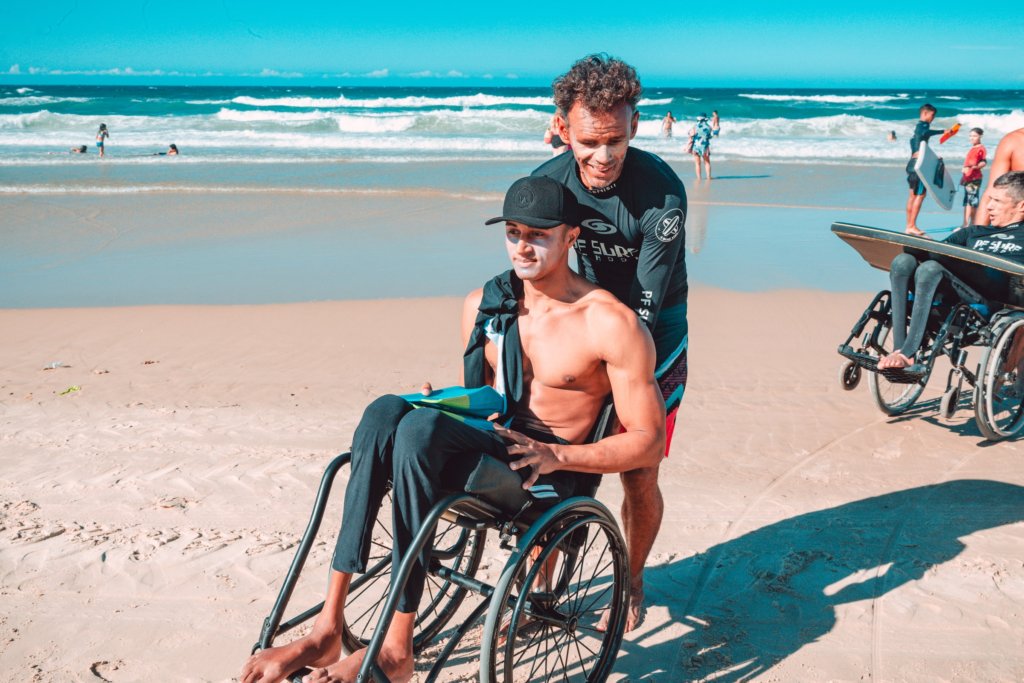Around the world, ancient humans used unique methods to stay cool in blistering climates. Desert-dwellers relied on windcatchers for electricity-free air conditioning, while others chose to drink tea to optimize sweating (more on this later).
Clearly, there are a number of creative ways to beat the heat, which is great for wheelchair users. Over the years, modern technology and word of mouth have brought new solutions for thousands of wheelchairs who jet-set to sunny regions.
As outdoor accessibility expands options for travelers, there are other challenges. One of the greatest is staying cool in a wheelchair, as many choose tropical locations when it’s time for a vacation. Others will naturally have free time in summer during some of the hottest months of the year.
And, as many know, even indoor adventures can present difficulties for wheelchair-users, as regulating body temperature can be difficult. Aside from outdoor adventures, many popular (indoor) events are also scheduled during summertime. For example, many poker pros pack up their bags for tournaments scheduled in summer months in hot locations like Vegas and Barcelona. These cities host the World Series of Poker and European Poker Tournament competitions respectively, which draw in thousands of tourists. But whether it’s to play poker or hit the museums, traveling in summer months will call for a few extra considerations, namely hydration and shade.
Here are five tips for staying cool while under the sun.
Tip One: The Basics
As mentioned above, the most basic rules for keeping cool apply here. The first is hydration and the second is looking for shade. Those who have limited options in terms of shade should look to limit their time in the sun.
Other handy tips are to wear loose-fitting clothing that won’t stifle the body. Be sure to choose neutral and light colors, as darker ones will attract the sun. Regardless of the activity, be aware of the time to prevent overexertion.
Tip Two: Mini-Fans (Handheld vs. Electric)
The handheld fan is one of the earliest inventions designed to cool the body. Centuries later, humankind may now have industrial air conditioning, but no design has topped the foldable handheld fan. These are ideal solutions for those who may be held up outside while waiting in lines.
However, there are more robust handheld solutions for those heading into the great unknown. Handheld fans are ideal because they’re easy to store and use. However, electric-powered fans are another great solution that won’t take up too much space or weigh too much.
Be sure to pack extra batteries, and don’t forget to check out hydration-based fans, such as misting fans. These will go a long way in cooling the body by simulating sweat, which gives the body a rest.

Tip Three: Gel Solutions
Wheelchair users know it’s not always about working harder, but smarter. Cooling gel packs are one of the savviest solutions for those heading into the outdoors for long stretches. Gel technology means frozen packs will break down slowly, offering hours of relief.
Mini-gel packs can be applied to the body’s sensitive areas to speed up cooling, including the neck, palms, and wrists. Larger gel pieces, including form-fitting, foam seat cushions, sometimes include cooling properties that make them ideal.
Tip Four: Drink (Hot) Tea
As mentioned early in the article, one ancient solution for cooling is to drink hot liquids. By sipping on tea, the body’s internal organs will warm and spur on the production of sweat. The evaporation of this sweat cools the body from all points. Typically, hot teas are drunk in the shade or before outdoor activities.
Tip Five: Cooling Vests (Cold Packs vs. Electric)
Similar to gel solutions, cooling vests have revolutionized how wheelchair users can regulate their body temperatures. Those opting for a cooling vest will have three options, including evaporation vests that rely on smart gels, vests that use cold-pack inserts, and electrical vests.
Gel and cold-pack solutions have been around for a bit of time and will offer cooling solutions that last between three to five hours. Electric-powered vests last longer—up to ten hours, depending on the brand. The vest works to pull heat from the body and help keep core temperatures lower.
.
.







